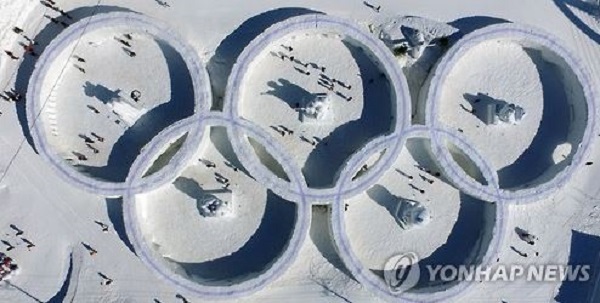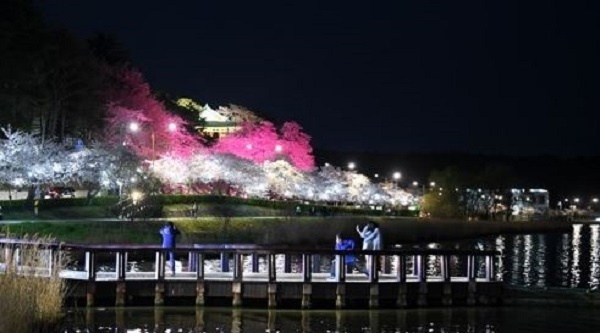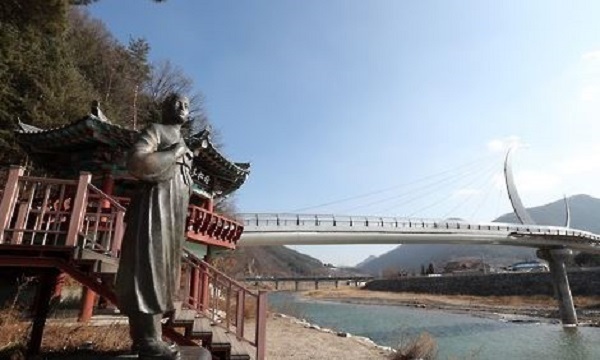Winter Olympics towns in Korea offer array of tourist attractions, delicacies
By YonhapPublished : Aug. 17, 2017 - 17:24
PYEONGCHANG -- The towns hosting the 2018 PyeongChang Winter Olympics, set to open next February, offer a stunning array of tourist attractions and delicacies, with visitors to be spoilt for choices available.
South Korea is scheduled to host the sports event in the three towns -- the mountainous area of PyeongChang in the country's northeast province of Gangwon, and its nearby sub-host cities of Gangneung and Jeongseon.

-- PyeongChang, an area of living nature 700 meters above sea level
Visitors to PyeongChang are infatuated with wild flowers in spring, dense forests and valleys with clean water in summer, autumnal tins in fall and the snow-covered landscape in winter.
With about 69 percent of the area located 700 meters above sea level, PyeongChang is blessed with comfortable weather that seldom hits visitors with a heat wave in the middle of summer.
One of the three delectable hot spots that visitors must hit up, PyeongChang's Daegwallyeong Pass is one of the country's areas that gets the most snow and is the home of winter sports. The ranch in Daegwallyeong allows an opportunity to view herds of cattle and sheep as well as beautiful landscapes all year round.
Premium beef produced there, called "Daegwallyeong hanwoo," is a must-eat in the area.

Looking for winter activities for special fun, one option is to visit Hoenggyeri village in Daegwallyeong to take part in a snow and ice festival held every winter.
If you want to fish for trout, known as "songeo" in Korean, through a hole in the frozen Odae Stream in the town, get ready to experience the PyeongChang Songeo Festival. PyeongChang is home to the fish's first and largest farming area. PyeongChang trout has a springy meat and high quality taste.
The Bongpyeong area in the town is the hometown of renowned novelist Lee Hyo-seok (1907-42) and is famous for its buckwheat production. A visit to Lee's birthplace and his memorial hall gives a glimpse to his literature world, including the writer's most famous story, "When Buckwheat Flowers Bloom."
A cultural festival featuring the writer takes place every September that is aimed at paying heed to Lee's literature at a time of buckwheat flowers reaching full bloom.
At the festival, visitors will find a variety of foods made of buckwheat including jelly "muk," pancake "jeonbyeong" and noodles "makguksu."
Timed with the Olympics, dishes newly developed for visitors include "hanwoo bulgogi," or sliced prime beef marinated in sweet soy sauce, buckwheat pasta, rice topped with trout, "hwangtae kalguksu, or hand-rolled noodles in dried pollack broth, and trout dumpling.
-- Gangneung, a cultural city in harmony with tradition, coffee
In Gangneung on South Korea's east coast, which will host competitions on ice, visitors are offered opportunities to enjoy touring sites of culture, history and arts as well as the natural scenery.
Just 10 minutes from Olympic Park is Gyeongpodae Pavilion, a must-visit place known to be the No. 1 tourist attraction on the east coast. It is often said that in the pavilion, visitors are able to see the sky, the sea, the lake and the moon reflected in a glass of drink and the pupil of one's eye.
The lake of Gyeongpo, around which many young people walk on a date, has Wolpa Pavilion on it. The name Wolfa originated from the sight of lake being shaken by waves in the moonlight.
Near Gyeongpodae are the birthplace of Heo Nanseolheon, a 16th century poet, and the Ojukheon house, where Shin Saimdang (1504-1551), Korea's maternal icon associated with raising Korean Confucian scholar Yulgok of the Joseon Dynasty, lived. It is also worthwhile to visit Seongyojang, an aristocratic house and one of the best preserved traditional houses in Korea.

Just south of Gyeongpo Beach is Chodang Dubu Village, which produces "sundubu," or soft Korean-made tofu. In the making of Chodang dubu, salt water from the East Sea is used in the congealing process that results in a soft and light tofu. The name of this village, Chodang, originates from the pen name of Heo Yeop, the father of writer Heo Gyun and poet Heo Nan-eolheon.
Other delicacies in the area are raw fish and white noodles in spicy raw fish soup "mulhoe."
Gangneung is also characterized by the popularity of coffee.
People's love of coffee is palpable wherever you go in Gangneung, as there are more than 300 coffee houses in a city with a population of 220,000.
Strolling on the coffee street of Anmok Beach, visitors can spot many coffee houses roasting their own coffee beans. A group of seasoned baristas has set up coffee houses on the street since 2007, leading to the establishment of the coffee street.
-- Jeongseon, a town of folk song "Arirang"
The town of Jeongseon, which will host the Olympics' alpine skiing speed events, is strongly associated with the origin of "Arirang," a traditional folk song that was put on UNESCO's intangible heritage list in 2012.
The Olympic town is best known for "Jeongseon Arirang," one of the folk song's variations that is Intangible Cultural Asset No. 1 designated by the Gangwon provincial government.
Essentially a simple song, Arirang consists of the refrain "Arirang, arirang, arariyo" and two simple verses, which differ from region to region. Experts estimate the total number of folk songs carrying the title ‘Arirang' at some 3,600 variations belonging to about sixty versions.
Visitors to a traditional market that is open every five days in the town are treated to a glimpse into how everyday Koreans used to live and a performance of "Jeongseon Arirang."
Also at the market are homegrown medical herbs and traditional dishes that include "gondeure bibimbap," or edible wild plant "gondeure" mixed with steamed rice, sesame oil and soy sauce.

Two other dishes available are the weird-looking but tasty noodles "olchaengi guksu" -- noodles of dough droplets that look like tadpoles -- and "kotdeung chigi" -- buckwheat noodles. Meaning hitting one's nose ridge, the noodles of kotdeung chigi are rough and solid in texture.
In order to do sports with a scenic view, visitors can take part in Jeongseon Rail Bike, a 7.2 kilometer-long ride in a comfortable rail bike that passengers pedal through the area's landscape. The bike sits on a continuous descent that makes it easy to ride along clean valley waters and crimson red foliage.
At the end of the ride is Auraji Station, a pier on the Dong River that flows from PyeongChang to the nearby towns of Jeongseon and Yeongwol in Gangwon Province. Auraji is also the birthplace of "Jeongseon Arirang Aejeongpyeon"
The folk song involves the heartbreaking story of a woman whose husband, a raftsman, departs down the river one day never to return. A bronze statue of Virgin Auraji representing the woman stands near the station. (Yonhap)







![[KH Explains] Hyundai's full hybrid edge to pay off amid slow transition to pure EVs](http://res.heraldm.com/phpwas/restmb_idxmake.php?idx=644&simg=/content/image/2024/04/18/20240418050645_0.jpg&u=20240419100350)







![[From the Scene] Monks, Buddhists hail return of remains of Buddhas](http://res.heraldm.com/phpwas/restmb_idxmake.php?idx=652&simg=/content/image/2024/04/19/20240419050617_0.jpg&u=20240419175937)

![[KH Explains] Hyundai's full hybrid edge to pay off amid slow transition to pure EVs](http://res.heraldm.com/phpwas/restmb_idxmake.php?idx=652&simg=/content/image/2024/04/18/20240418050645_0.jpg&u=20240419100350)

![[Today’s K-pop] Illit drops debut single remix](http://res.heraldm.com/phpwas/restmb_idxmake.php?idx=642&simg=/content/image/2024/04/19/20240419050612_0.jpg&u=)